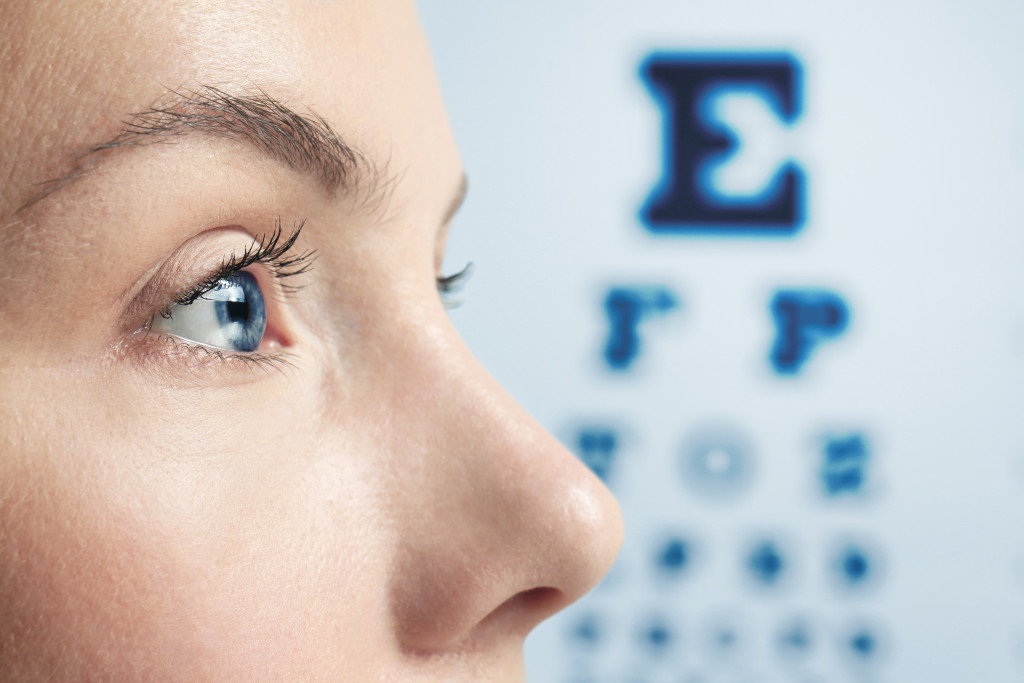More than 45 million Americans have ocular conditions, according to statistics from 2020. The main causes of eye problems and diseases are hereditary, preexisting medical conditions, or lifestyle.
Putting too much strain on our eyes can lead to redness, irritation, and dryness. Eye strains are prevalent among people who work long office hours, people who read a lot, and those who drive for lengthy periods. Using gadgets for too long and with high brightness also causes eye strain.
Exposure to technology is already starting at a young age due to modernization. When it becomes a prolonged habit, its effects on our eye health can manifest after quite some time. Daily diets and preexisting medical conditions also play into the status of our eye health and must be monitored carefully.
There are many professions nowadays that bank on good eye health. Taking care of our eye health is important as it could greatly affect our lives and routines.
If you fall under categories that make you prone to eye problems, here are some that you should watch out for when you’re already past your roaring 20s.
Dry Eye Disease (Keratoconjunctivitis sicca)
Dry eye disease is a progressive eye disease, meaning that it could get worse over time. This occurs when your tear ducts are unable to produce enough tears to provide eye lubrication. This damages and causes inflammation in the eyes. This uncomfortable condition to have since it gives stinging and burning sensations in the area.
Dry eye disease is common in women, people who frequently use contact lenses, people with a history of refractive surgery, and having low vitamin A in the diet.
Keratoconjunctivitis can be prevented by avoiding air directly blowing into the eyes, humidifying the air, and avoiding smoke. It can be treated by using prescribed eye drops, artificial tears, and lifestyle changes.
Keratoconus
Keratoconus is another progressive eye disease that occurs when the cornea (the dome-shaped surface of the eye) bulges outward and becomes conical.
Keratoconus is common among people between the ages of 10-25 years old and can progress slowly over a decade. Symptoms of keratoconus include blurred vision, sensitivity to light, and sudden clouding of vision. When left untreated, it can rapidly worsen into a scarred and damaged cornea.
Vision problems due to keratoconus are corrected in their early stages using soft contact lenses and prescription glasses. A recently developed treatment called corneal cross-linking surgery slows down or stops keratoconus from progressing.
Uveitis
A type of eye inflammation is uveitis which affects the uvea, the eye wall’s middle layer. This eye problem worsens just as fast as it comes.
Some uveitis symptoms are eye pain, eye redness, and blurred vision. When left untreated, the worst-case scenario is permanent vision loss and complications such as retina scarring, retinal detachment, and glaucoma.
This is possibly caused by pre-existing autoimmune diseases, medication side effects, eye injury, or an infection. Immediately consult an eye specialist when you think you have uveitis.

Astigmatism
Astigmatism is a common and treatable imperfection in eye curvature. It causes blurred distance and near vision and may occur alongside nearsightedness (myopia) or farsightedness (hyperopia).
Symptoms of this condition are blurred vision, headaches, eye strain, and difficulty in night vision. This is common among children and adolescents but can progress throughout adulthood.
People with astigmatism usually have this since birth. If the condition is pronounced enough, it is treated with corrective lenses or other options presented by eye specialists to correct vision problems.
Glaucoma
Eye problems that result from optical nerve damage and abnormally high eye pressure are collectively called glaucoma.
Even with glaucoma as the leading cause of blindness of people aged over 60, it can be detected early through regular eye check-ups with your eye specialist. Upon diagnosis, treatments usually last for a lifetime. Some signs of glaucoma are floating spots in vision, severe headaches, eye redness, and eye pain.
Diabetic retinopathy
A group of metabolic disorders wherein people who have it are characterized by high blood sugar levels for a long time is called diabetes mellitus. It is common among adults, but the age at which people are becoming diabetic is becoming younger, with types 1 and 2 diabetes already found among children and young adults.
A complication that could result from diabetes is diabetic retinopathy. Blood vessels in the retina become damaged and manifest symptoms such as floating spots in vision, blurred vision, and vision loss.
Diabetes management ensures that diabetic retinopathy does not worsen and result in blindness, glaucoma, or retinal detachment.

